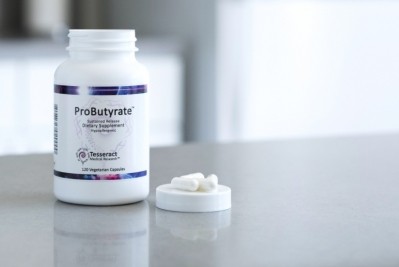Modified quercetin facilitated muscle growth in young athletes, study finds

Researchers based in Japan studied an enzymatically modified isoquercetin and detailed their results in a paper published recently in the Journal of the International Society of Sports Nutrition. The paper is titled Effects of enzymatically modified isoquercitin in supplementary protein powder on athlete body composition: a randomized, placebo-controlled, double-blind trial.
Bioavailability-enhanced form
The researchers noted that this form of quercetin, an antioxidant compound found in many plants, including citrus fruits, onions and buckwheat, has been studied for more than a decade. The enzymatic modification is meant to increase the bioavailability of this compound, which they noted is hard to absorb in its native, poorly soluble form.
The issue of poor quercetin bioavailability has been addressed in other ways, including using using food grade lecithin in a 'phytosome' delivery form.
In sports nutrition, quercetin has mostly been studied in relation to its antioxidant action as a way of cushioning oxidative stress in the muscles brought on by heavy exertion. But the authors noted that recent research in a mouse model has shown the ability of the enzymatically modified isoquercitin (EMIQ) to facilitate muscle growth. EMIQ is distributed in the US market by Innophos.
To test this hypothesis in humans, the researchers recruited 40 teenaged Japanese athletes who were competing in American football (median age 19.8 ± 1.4 years). The experiment group received 20 grams of whey protein powder with 47 mg of EMIQ, while the control group received 20 grams whey protein only. The athletes received the supplements six times a week for 4 months. The researchers excluded athletes who were taking other supplements as well as those with food allergies and/or those with unbalanced diets. All participated in their normal training routines during the length of the study. The subjects’ nutrient intakes were measured by food questionnaires.
First paper to make such a link
The researchers measured the results of the supplementation on lower leg muscle mass with before and after measurements. They also took blood draws to verify antioxidant status. The researchers found a link between EMIQ’s ability to quell inflammation and an observed increase muscle protein synthesis.
“To the best of our knowledge, this is the first report to show that antioxidants increase lower limb muscle mass, suppressing antioxidant stress,” they said.
The researchers found that the EMIQ combined with whey protein significantly increased lower leg muscle mass, confirming the effects seen in the earlier mouse study.
The method of action by which EMIQ had this effect is less clear, they said.
“One of the speculative mechanisms is suppression of oxidative stress. Antioxidant supplementation after exercise affects inflammatory markers, muscle fatigue and performance, although no report has suggested that antioxidant supplementation intensifies muscle hypertrophy. EMIQ supplementation may increase the endurance or work capacity of players, as revealed by studies that reported that quercetin improves muscle damage or endurance exercise capacity. However, we could not measure endurance or work capacity in this long-term study. Antioxidant status of a player is related to performance during fatiguing exercise; therefore, improvement of antioxidant status by EMIQ supplementation may be an advantage to players.
“Another possible mechanism is the previously reported function of quercetin as an activator of mitochondria biogenesis,” they wrote.
Source: The Journal of the International Society of Sports Nutrition
16, Article number: 39 (2019)
Effects of enzymatically modified isoquercetin in supplementary protein powder on athlete body composition: a randomized, placebo-controlled, double-blind trial.
Authors: Omi N, Shiba H, Nishimura E, et al.















